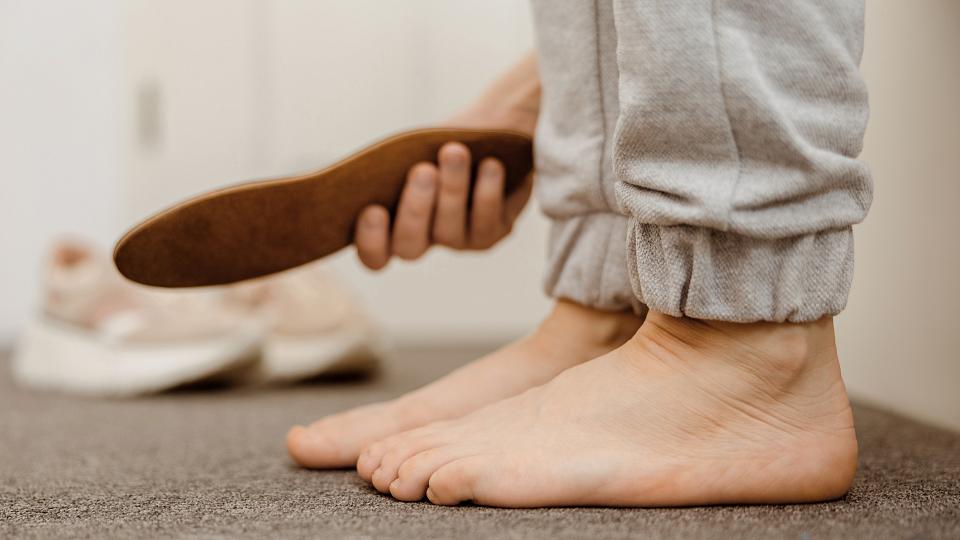What Is Osteomyelitis of the Foot?
Osteomyelitis is an infection in your bone. Osteomyelitis in your foot or ankle often develops because you have a wound on your foot that isn’t healing. You can develop osteomyelitis even if you can’t see or feel a wound, but it’s uncommon.
There are two main types of osteomyelitis:
- Acute osteomyelitis, an infection that develops suddenly over several days to weeks
- Chronic osteomyelitis, an infection that’s lasted for several weeks or months
Osteomyelitis Causes & Risk Factors
Osteomyelitis develops when bacteria or another germ enters your bone. You’re more likely to develop osteomyelitis in your feet if you have a health condition that increases your risk of slow-healing wounds:
- Type 1 and type 2 diabetes—Unmanaged diabetes can increase your risk of foot ulcers (sores).
- Neuropathy—Nerve damage and numbness in your feet can increase your risk of non-healing foot wounds.
- Vascular problems—Poor blood flow to your legs and feet can raise your risk of slow- or non-healing wounds.
Osteomyelitis Symptoms
Osteomyelitis in your foot doesn’t always cause symptoms. You may not know you have a bone infection until you get treatment for a wound that won’t heal.
Some people experience one or more signs of a bone infection:
- Drainage around a foot or ankle wound (drainage can vary in color, consistency, and odor)
- Exposed bone that you can touch when placing a cotton swab in an open wound
- Foot or ankle pain
How Is Osteomyelitis Diagnosed?
Our foot and ankle specialists use several tests to diagnose osteomyelitis:
- Blood tests help us check your bloodstream for signs of infections.
- MRIs (magnetic resonance imaging) are the best imaging test for diagnosing osteomyelitis. They show us a close view of your bones and soft tissues.
- X-rays are often the first imaging test we use. They help us look closely at your bones.
Osteomyelitis Treatment
Your treatment plan depends on how bad the infection is and what treatments you’ve already tried. Our providers work with you to find the most effective approach for your needs:
- Antibiotics—You may take antibiotic medications for about 4–6 weeks. You may take them by mouth or intravenously (through an IV). Our infectious disease specialists often coordinate antibiotic treatment. After about six weeks, we check to see if your wound is getting smaller and starting to heal. Your care team may recommend surgery if the wound hasn’t changed.
- Surgery—We use surgical techniques tailored to your needs. Your surgeon makes an incision (cut) over the infected area. Then they remove the infected bone and tissue (debridement). In severe cases, they may remove a part of your foot to remove the infection.
- Wound care—Wound care involves treatments such as special casts, bandages, or ointments that promote wound healing. We may also use negative pressure therapy, where we use a special vacuum to pull fluid and infected tissue from your wound. We typically prescribe wound care treatments along with antibiotics or you may have wound care treatment after surgery.
How Long Does It Take to Recover From Osteomyelitis?
Your recovery time depends on how bad the infection is and what treatment your provider recommends. Less severe infections may heal within several weeks. More complex, severe infections may take several months.
Why Choose University of Utah Health?
Osteomyelitis is complex and requires a team of experts to treat it effectively. Our foot and ankle surgeons are all fellowship-trained, board-certified orthopedic surgeons. These qualifications mean they have extra training in foot and ankle problems. We offer you the most advanced treatments and are experts in treating both common and complex diseases. Physicians throughout the region refer patients with the most difficult cases to our expert team.
Our team of doctors from multiple specialties work together to care for you:
Find a Osteomyelitis Specialist
Schedule an Appointment With a Foot & Ankle Specialist
Contact our Orthopaedic Services at 801-587-7109 to schedule an appointment with our orthopedic specialists.
You can also get a referral to see our orthopedic specialists from your primary care provider, a provider in the urgent care or emergency room, or other specialist.
Some insurance plans require that you get a referral from your primary care provider in order to see a specialist and have it covered under your plan. Check with your insurance carrier to find out if this is required with your plan and get a referral if necessary.






